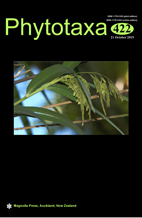Abstract
Otatea, with 12 described species, is the second most diverse genus in the subtribe Guaduinae. Eleven species of Otatea occur in Mexico, of which 10 are endemic. The Mexican Otatea species grow in tropical dry forest, the ecotone between tropical dry forest and oak forest, cloud forest, humid oak-pine forest, and xerophilous scrubs. Here, we describe the synflorescence and flowers of Otatea nayeeri and O. transvolcanica, based on newly collected specimens and review of existing herbarium material. We present a key based on the flowering characters of the Mexican Otatea species, and provide expanded morphological descriptions and illustrations of O. nayeeri and O. transvolcanica. Otatea nayeeri and O. transvolcanica do not exhibit the gregarious monocarpic flowering pattern that has been recorded for other Otatea species. A flowering individual of O. transvolcanica was observed being visited by a Lasioglossum (Dialictus) sp. (Halictidae) bee. This is the first record for Otatea being visited by bees. The geographical distribution of O. nayeeri is extended northwards to the state of Durango in Mexico.

